According to Statista, there are over 63,000 grocery stores in the US.
How do thousands of grocery stores decide what sections to add to a grocery store aisle? What is the typical grocery store layout?
I have the answer.
I wrote this article to explain the different grocery store aisles and what products you’ll most likely find under each one. I’ll also give tips on improving your grocery shopping experience by planning your purchases.
Let’s start.
A Complete Grocery Store Aisle List
This section lists the most popular grocery store aisles and the products you’ll likely find under each one.
I also listed the grocery store aisles alphabetically. The sequence of aisles can vary depending on the grocery store.
Alcohol Aisle
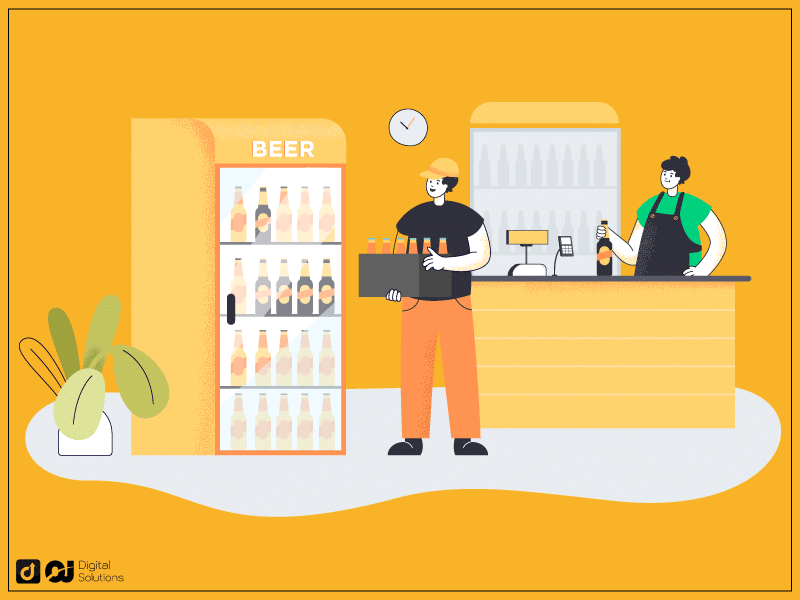
Most grocery stores have a designated alcohol aisle, either separately or along with beverages.
You can pick up liquor from this section but can’t purchase it unless you’re at least 21.
You can only find one alcohol aisle in most grocery stores, but some have two sections with different products on each aisle. Some larger grocery stores have a separate grocery aisle for premium and more affordable alcoholic beverages.
There are also high-end grocery stores with a separate section for wine and another section for everything else.
Most popular products:
- Wine
- Beer
- Tequila
- Whiskey
- Gin
- Vodka
- Rum
- Brandy
- Cognac
- Sake
Baking Aisle
The baking aisle includes various baking products, from boxed desserts to baking powder. However, the baking aisle usually excludes frozen foods or goods that require chilling.
Many grocery stores only sell dry goods on the baking aisle, and you must go either to the beverage or frozen aisle for the remaining ingredients. Most of the time, you’ll find the baking aisle in the middle of the grocery store.
The baking aisle also includes items not necessarily for baking that people often use for baking. Inclusions depend on the size of the baking aisle.
Most popular products:
- Flour
- Sugar
- Baking Powder
- Chips
- Baking Chocolate
- Boxed Desserts
- Spices
- Raw Nuts
- Cornstarch
- Oil
Beverage Aisle
You can find a beverage aisle in all big or small grocery stores, but its contents differ depending on the grocery store. Most small grocery stores add the alcohol section to the beverage aisle, like beer in the refrigerator or a small liquor area close to the beverages.
A beverage aisle of a small grocery store often stores beer and other alcohol in the refrigerator. Larger stores sometimes have a chilled and dry beverage aisle separately.
Most grocery stores have a beverage aisle near the checkout counter, making grabbing drinks last minute easier. Most grocery stores without their dedicated dairy aisle often sell milk, butter, cheese, and other dairy products on the beverage aisle.
Most popular products:
- Power drinks
- Soft drinks
- Water
- Fruit juice
- Energy drinks
- Health drinks
- Coffee
- Tea
- Sparkling drinks
- Smoothies
Bread Aisle
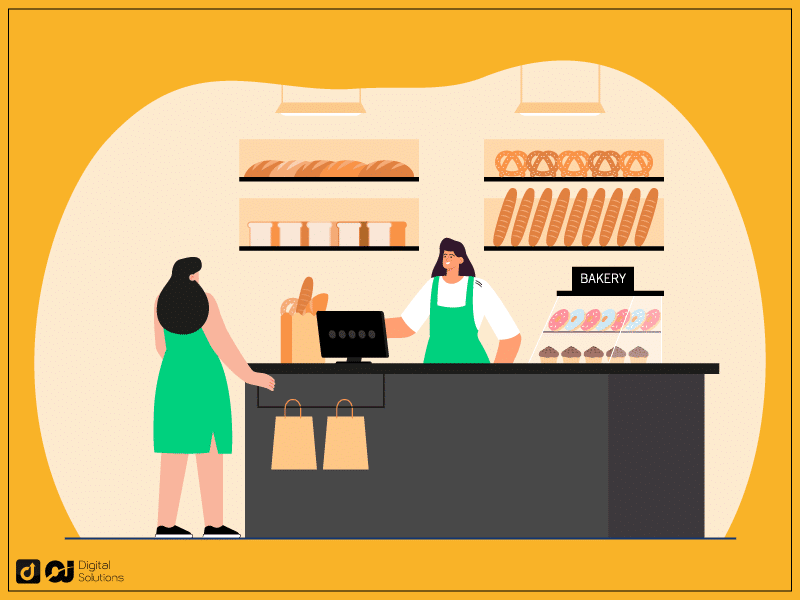
The bread aisle is vital in some places, so some grocery stores stretch the aisle out to two lanes. The bread aisle is often more visible than other aisles since you’ll see shelves of bread from loaf bread to maybe a baguette.
Some grocery stores separate the bread aisle from other sections with a dedicated table or a unique setup for premium bread products like french bread. However, many grocery stores’ bread sections are just regular shelves with fresh and processed bread products.
You can sometimes find bread-related biscuits on the bread aisle, but you won’t find condiments. If you want spreads, look at the condiments aisle, not the bread aisle.
The bread aisle is near the breakfast aisle, breakfast cereal aisle, and the bakery department of some grocery stores.
Most popular products:
- Rye bread
- Pita
- Baguette
- Focaccia
- Sandwich bread
- Sourdough
- Multigrain
- Brioche
- Whole grain
Breakfast Aisle
The breakfast or breakfast cereal aisle sells breakfast food like waffle mix and different cereals.
In smaller stores, the breakfast aisle is with other aisles like the baking, bread, and sometimes canned goods aisle.
Larger grocery stores have a dedicated breakfast cereal aisle with just cereal for all its store shelves.
Grocery shopping in a larger grocery store is easier since the breakfast section also includes coffee, tea, and other dry beverages you often have for breakfast.
The cereal aisle for some grocery stores ranges from a few shelves to sometimes two lines.
Some grocery stores divide their breakfast aisle into two lanes, one for cereal and the other for selling breakfast-related foods like pop-tarts, sandwich rolls, syrup, cold cereals, and others.
Most popular products:
- Waffle mix
- Pop tarts
- Cold cereals
- Biscuits
- Syrup
- Sandwich rolls
- Breakfast bars
- Breakfast drinks
- Toaster pastries
- Pancake mix
Candy Aisles
The candy aisle or candy and snack aisles include sweets, candies, and snacks. Some grocery store aisles make the candy section more attractive to kids by adding figurines and sometimes designs to the shelves.
When grocery shopping, you’ll notice how colorful the candy and snack aisles compare to other sections. The grocery store aisle sometimes separates the premium treats from the regular candy.
Larger candy and snack aisles have a section for premium chocolate, candy, and imported snacks on one side and everyday treats on the other.
When grocery shopping, you’ll usually notice the less-colorful section of the candy and snack aisles to be the premium segment often.
The candy and snack aisle’s location depends on the store size, but you can often spot it immediately near other dry-good snack aisles.
Most popular products:
- Chewing gum
- Mints
- Lollipops
- Premium candy
- Chocolate bars
- Hard candy
- Christmas/holiday candy
- Cookies
- Chocolate/candy nuts
- Marshmallows
Canned Aisle
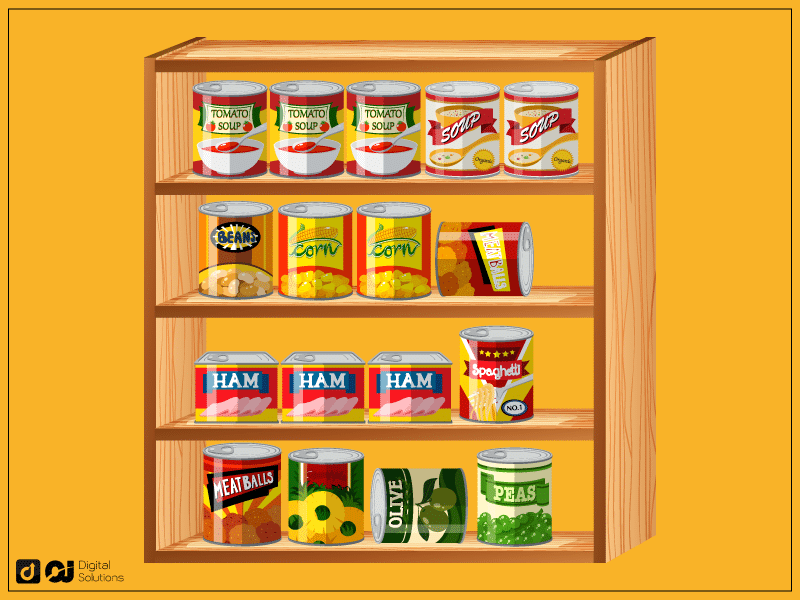
The canned goods aisle sells canned meats and canned vegetables that are ready to cook instantly for dinner.
Unlike frozen foods, you can see the nutritional makeup of canned goods on the packaging.
The canned goods aisle sells canned products that often take a while to expire. Canned meats and canned vegetables often take months to years before expiring. However, checking the expiry date before purchasing is essential.
The canned goods aisle has sections for canned meats, where you can find lunch meat and other products, and canned vegetables, where you can find products like green beans and other veggies.
Sometimes the canned section takes more than one aisle for big grocery store establishments.
More popular products:
- Canned chicken
- Canned beef
- Canned pork
- Canned fish
- Canned green peas
- Canned green beans
- Canned baby corn
- Canned tomatoes
- Canned chili
- Canned soup
Cheese and Butter Aisle
The cheese and butter aisle is sometimes mixed with the dairy aisle and sells different dairy products from various kinds of cheese to different types of butter.
However, major departments have a whole section for cheese and butter alone.
While the dairy aisle differs, the cheese and butter aisle focuses on cheese and butter products. It focuses more on the selections of cheese compared to other dairy products.
The dedicated cheese and butter section is typically smaller than other grocery store aisles. However, if mixed with the dairy aisle, it is often as large or sometimes larger than most sections.
The dairy section has more than one aisle for a large grocery store, with the cheese and butter section separated. Unlike common aisles, the cheese and butter sections have chillers.
More popular products:
- Salted butter
- Unsalted butter
- Plant-based butter
- Organic butter
- Mozzarella
- Cheddar
- Parmesan
- Cream cheese
- Ricotta
- American cheese
Condiment Aisle
The condiment aisle focuses on sauces, dips, and other condiments. This section includes many plastic and glass bottles and sometimes small plastic packages for sauces and other condiments for smaller stores.
The condiment aisle is mainly among the middle aisles, with other cooking-related sections for smaller grocery store establishments. Sometimes the condiment aisle is typically located next to the canned goods section.
If your grocery list has different sauces or ketchup, you will find everything on the same aisle.
The condiments section is among the most common aisles in any grocery store. If condiments don’t have a specific area, you can find them with other cooking ingredients.
Most popular products:
- Olive ketchup
- Tomato ketchup
- Mushroom ketchup
- Grape ketchup
- Fig ketchup
- Butter sauces
- Fish sauces
- Meat sauces
- Gravy
- Food mixes
Dairy Aisle
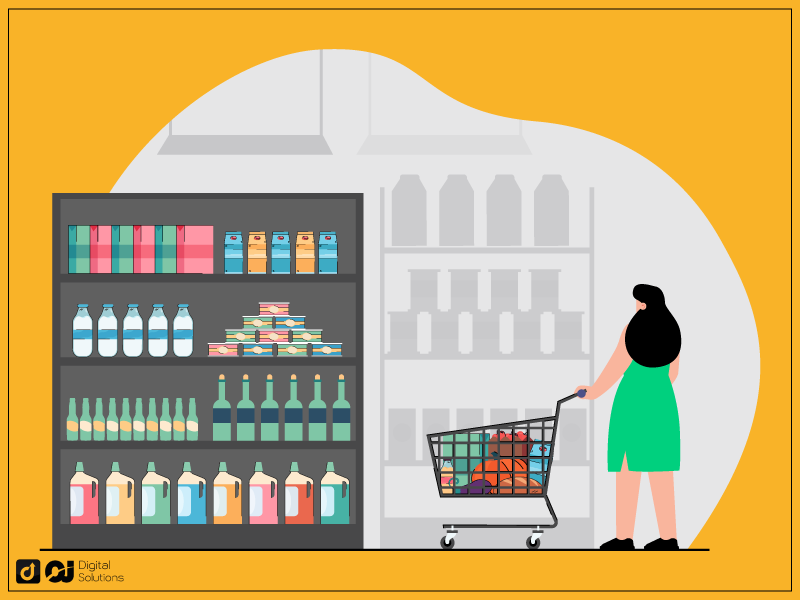
The dairy aisle sells a broader range of dairy products, like milk-based desserts and yogurts (in addition to milk). The dairy aisle also includes other frozen treats like ice cream and custard.
Unlike common aisles, the dairy aisle is often the most extensive section of the grocery store.
You can usually find it in the corner, occupying most space. In some retail concepts, the dairy section is often as extensive as the frozen meat or produce section.
Although cheese and butter are still dairy products, they often have their own aisle in smaller grocery stores. You can sometimes find eggs under this section.
Most popular products:
- Ice cream
- Gelato
- Yogurt
- Milk-based desserts
- Custard
- Buttermilk
- Evaporated milk
- Fresh milk
- Sour cream
- Nonfat milk
Deli Aisle
The deli aisle sells pre-packaged meats and other processed meat products. In larger grocery store establishments, the deli aisle also includes different selections of sausages and other ready-to-eat products.
Some grocery store establishments place the deli section together with a sandwich or bread section. Stores often group them with other ready-to-eat products.
You can find the deli segment on the store’s wall, sometimes close to the beverage section next to energy drinks or power drinks. The deli section in smaller grocery store establishments consists of a few chillers.
More popular products:
- Sliced cheeses
- Ham
- Salami
- Pepperoni
- Sausages
- Chorizo
- Pancetta
- Chicken rolls
- Pastrami
- Mortadella
Frozen Aisle

All grocery store establishments have a frozen aisle dedicated to frozen goods. Depending on the size of the grocery store, the frozen aisle is close to or mixed with the deli aisle and sells processed meat products.
In some grocery store establishments, the frozen aisle is next to or close to the beverage section. You can often find it on the store’s walls. You can find frozen goods like frozen green beans, desserts, and pizza.
Smaller grocery store establishments without a dedicated meat and seafood department often mix it with the frozen aisle.
In some grocery store locations, the frozen aisle is the largest segment of the store and is sometimes next to the beverage aisle.
More popular products:
- Frozen fruits
- Frozen vegetables
- Frozen pizza
- Desserts
- Ice Cream
- Frozen breakfast items
- Frozen meat
- Frozen processed meat
- Frozen seafood
- Frozen bakery products
Gluten-free Foods Aisle
Some premium grocery store establishments have their gluten-free aisle. Compared to most common aisles, the gluten-free section sells products without gluten, including frozen and dry gluten products.
This department has millet, corn, potatoes, and other gluten-free products and goods. This segment aims to replicate most items from common aisles but without gluten.
If you follow a strict gluten-free diet, only buy products from this segment. This segment is often far from the middle aisles, with different locations depending on the grocery store.
More popular products:
- Buckwheat
- Millet
- Corn
- Gluten-free flour
- Quinoa
- Soy
- Tapioca
- Flax
- Amaranth
- Arrowroot
Meat and Seafood Aisle
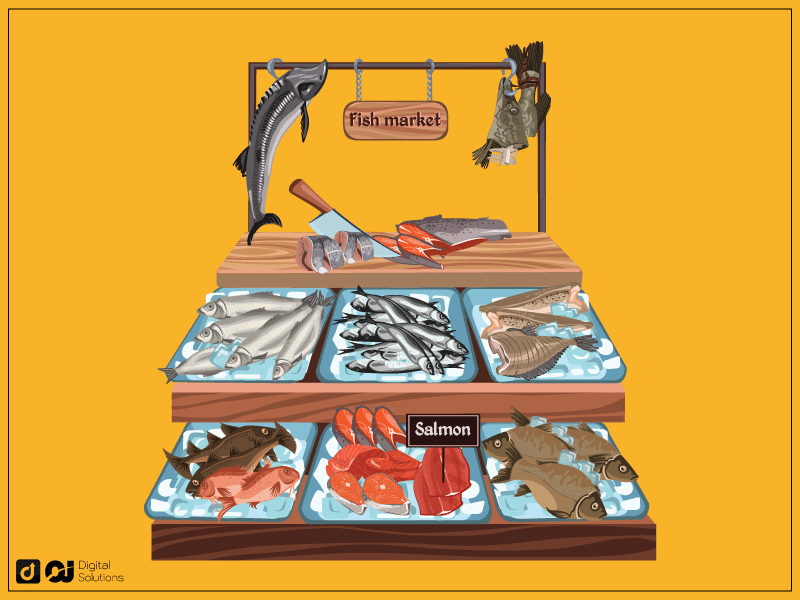
The meat and seafood section is among the most common aisles in almost all grocery store establishments. Sometimes this area includes a department for pork, beef, and chicken and a separate seafood department.
In larger grocery store establishments, the seafood department divides even more into fresh fish like salmon, octopus, or lobsters and processed fish products. The poultry department contains different types of poultry meat like turkey or duck.
Some establishments have choice meats like lamb, goat, and sometimes deer. Ins some places, you can get imported premium meat like Wagyu from Japan.
More popular products:
- Octopus
- Lamb
- Beef
- Pork
- Chicken
- Tuna
- Salmon
- Lobsters
- Shrimp
- Sardines
Organic Foods Aisle
The organic food aisle offers everything organic. Some grocery store establishments have an organic section that sells food and beauty products.
Some grocery store establishments only have a processed organic food aisle, while others have a divided section with fresh and processed food. The organic food section is sometimes smaller than other common aisles.
Most establishments place the organic food aisle close to the door or counters. If there is a dedicated fresh produce aisle, there is often an organic food section.
More popular products:
- Apples
- Green beans
- Avocadoes
- Strawberries
- Carrots
- Cucumbers
- Oranges
- Organic cheese
- Organic meat
- Organic milk
Paper Products and Cleaning Supplies Aisle
The paper products section is often side-by-side with cleaning products like toilet tissue and sometimes other cleaning supplies.
In the same aisle, you can find paper plates, toilet paper, garbage bags, paper towels, and other things for cleaning and sorting trash.
This segment also shelves bathroom cleaners and other chemicals used for the home-cleaning process, like laundry detergent or acid.
This aisle is one of the most common aisles for most grocery store establishments. You can often find it on the opposite side of the fresh food section.
Out of the many common aisles, this section offers no food. Grocery stores often keep this aisle away from edible grocery items.
Most shoppers head to this section last since it opposites food.
Most popular products:
- Paper plates
- Bathroom cleaners
- Toilet tissue
- Laundry detergent
- Paper towels
- Garbage bags
- Cleaning supplies
- Paper cups
- Paper utensils
- Toothpicks
Personal Care Aisle
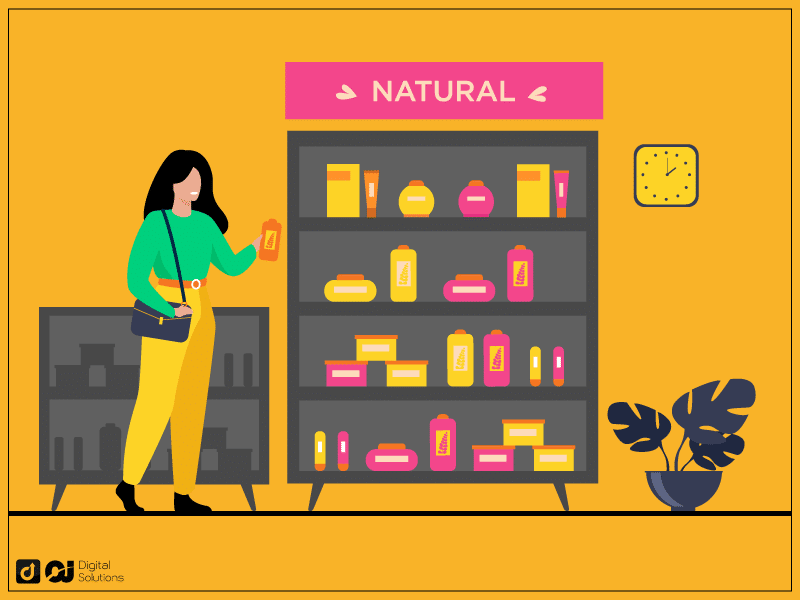
The personal care aisle is often next to the cleaning supplies section and sells personal hygiene products like soap, shampoo, shaving cream, and others. You can also find first-aid items under this section, like bandaids or alcohol.
This section also includes fragrances, deodorants, and other hygienic and beautification products. Depending on the grocery store size, the personal care section can stretch two to even three lanes.
Some grocery store establishments divide this section into two sides, one for grooming and the other for beautification. As one of the most common aisles in all stores, this segment sometimes has a premium section on the same or another aisle.
The personal care aisle in smaller grocery store establishments occasionally shares shelf space with cleaning supplies or paper products.
Most popular products:
- Shampoo
- Hair color
- Skin moisturizers
- Perfumes
- Nail paint
- Toothpaste
- Tissues
- Wet wipes
- Soap
- Deodorants
Snack Aisle
Some grocery store establishments have a separate snack aisle from the candy section. This aisle sells chips, nuts, and popcorn.
It is one of the most common aisles.
The snack aisle is sometimes the most extensive section in stores. Larger grocery stores divide the snack aisle into sour, salty, and sweet foods.
You can find the snack aisle close to the candy aisle. Some people call this section the grocery store chip aisle.
More popular products:
- Chips
- Popcorn
- Nuts
- Biscuit sticks
- Puff pastries
- Wafer bars
- Processed fruit snacks
- Cookies
- Tortilla chips
- Crackers
Pasta Aisle
You can find a pasta aisle in some premium grocery store establishments, but it is not one of the more common aisles. If you go on a shopping trip to a smaller convenience store or grocery store, expect the pasta section to blend with either condiments or other cooking necessities.
The pasta aisle sells other products related to pasta, like herbs and sometimes different pasta sauces. Sometimes the salt and herbs section mixes with or is near the pasta section.
Depending on the grocery store, the pasta section is sometimes also located near the canned goods segment. Although not one of the most common aisles, you will still likely find pasta products on other aisles of the grocery store.
Most popular products:
- Farfalle
- Egg noodles
- Fettuccine
- Gnocchi
- Lasagna
- Linguine
- Macaroni
- Penne
- Carbonara sauce
- Pesto sauce
Difference Between Grocery Stores, Convenience Stores, and Supermarkets
Grocery store establishments differ from a convenience store and supermarket in terms of design, offering, and layout. Before you make your shopping trip, know the difference between the different types of stores.
Grocery Store
The grocery store sells a wide range of items, from food to general merchandise, and is usually the source of shopping for items to take home. Grocery departments sell you items for consumption at home or for home improvement, maintenance, or sanitation.
Grocery store sections are standard and differ depending on the store size and the sequence of aisles in a grocery store.
An example is the grocery store cereal aisle, which sometimes has its own section in bigger stores but blends with the breakfast aisle in others.
Grocery store establishments sometimes merge the fruit section with the produce section.
Larger locations often have standalone sections for fruits. Sometimes a grocery store layout includes a large section for produce alone.
The size of a grocery store in the area often differs from state to state. In some places, the grocery store is part of a larger mall.
Grocery Department Meaning
This is the segment of a general retail merchandise store that focuses on groceries of both edible and non-edible merchandise. Sometimes a grocery is a whole structure itself.
Convenience Stores
A convenience store aisle is usually more limited than a grocery store and offers items that are usually consumable on the go and offers smaller travel-sized items.
Most stores don’t have their own fresh meat or produce aisles and often only sell processed goods.
Unlike grocery store categories, stores sometimes have just two to three aisles, with most sections sharing a lane.
You’ll often find snacks and candies on one aisle, canned goods in another, and toiletries, cleaning products, or personal grooming products in another.
It’s easy to find snacks or boxed dinners at a convenience store, but you rarely find fresh produce that isn’t packed and frozen. You can also find paper products in most stores.
Convenience Store Meaning
A store conveniently located with a limited range of groceries and household goods. Sometimes convenience stores sell cooked food like hot dog buns or burgers.
Supermarket
Supermarket departments are like grocery stores with a broader range of products and more categories. A supermarket aisle is often more specific, like having a separate deli, frozen, and fresh section.
Some supermarkets also have a hardware, appliance, and toy section, and unlike most grocery store snack aisles, supermarkets often separate premium products from regular ones.
The meat section of grocery store establishments is often smaller than those of supermarkets.
Another thing you’ll find in some supermarkets and not grocery stores are fresh flowers. Even if some supermarkets don’t have a flower shop, some still sell fresh flowers close to the produce section.
Supermarket Meaning
A large store that sells foods and household goods but with added sections like kitchenware, electronics, and other aisles.
How Are Grocery Stores Organized?
Since there aren’t any grocery store aisle maps, learning how stores organize sections will help you shop more efficiently.
There are three major segments of grocery items: 1) cold foods, 2) dry foods, and 3) others.
Cold Foods
The cold foods section contains aisles with chillers and freezers selling faster-perishable items. The produce section of grocery store establishments is an example of cold foods section.
Generally, if you look for something frozen or chilled, you can find it in the cold food section. Some grocery stores even sell live fish, lobsters, crabs, or other seafood, which you can find in the cold section.
You’ll most likely find fresh flowers or beverages in the cold foods section of supermarkets. In some stores, cold foods comprise a quarter or a third of the grocery store.
You can find the dairy section of grocery store establishments under cold foods.
Here are the aisles under this group.
- Beverage aisle
- Cheese and butter aisle
- Dairy aisle
- Deli aisle
- Frozen aisle
- Meat and seafood aisle
- Organic foods aisle
Dry Foods
The dry foods section sells condiments and other food products that don’t require chilling or freezers. Sometimes, this includes snacks, candy, or even pasta. Sometimes special dry food aisles have a freezer or chiller in the middle.
These special sections include vegan or gluten-free selections with special cold products in the group. Some groceries sell beverages in the dry food section.
The dry foods section contains breakfast items like cereal and drinks like coffee or powdered milk. You can also find cooking ingredients or baking materials in this section.
Here are the aisles under this group.
- Alcohol aisle
- Baking aisle
- Bread aisle
- Breakfast aisle
- Candy aisle
- Canned aisle
- Condiment aisle
- Gluten-free foods aisle
- Organic foods aisle
- Snack aisle
Others
This part of the grocery store sells non-edibles and non-perishables, including cleaning materials or sometimes hardware. Some grocery stores have a toy area in this section.
Other sections in this group include personal hygiene, paper products, plastics, and other supplies.
In supermarkets, this section sometimes takes half or even more of the entire store if it sells electronics, appliances, and sometimes even clothes.
This segment is often smaller in convenience stores and offers limited items, often for personal hygiene or essential cleaning products. You can find this section usually the farthest away from fresh produce.
Here are the aisles under this group.
- Paper products and cleaning supplies
- Personal care aisle
Tips for Effective Grocery Shopping
Grocery shopping can be time-consuming and ineffective if you don’t have a plan. Avoid wasting time, money, and effort, by following these tips.
Make a List.
Before going to the store, list what you need to buy. I suggest you group your non-negotiables in one part and extras in another.
When shopping, prioritize the non-negotiables. You can buy everything else on your list if you have more to spend. Another way to do this is to write food and essentials at the top and snacks at the bottom.
Before you go to the store, review your list again. Have your partner or anyone living with you double-check the list if possible.
You can keep your list for future purchases. It’s also an excellent way to help you keep track of your ideal purchases.
Eat Before Shopping.
One mistake some people make and don’t realize is shopping on an empty stomach. Hunger affects your decision-making, making you buy things you don’t need in quantities you can’t finish.
If possible, get a bite before shopping and ensure you’re well-hydrated before entering the store. Some store locations have fast-food chains or restaurants near the grocery.
If you are in no hurry and want to maximize savings, you can enter the grocery and shop for a snack, go out, eat your snack, then continue shopping once you’re full.
Create a Budget.
Set a realistic budget when you enter the grocery store and try to stick to it. You can use your phone as a calculator to ensure that you’re sticking to your budget. If the carts have calculators, add every item you place in the cart.
You can also make a separate budget for food, toiletries, cleaning supplies, and other categories. Place the most emphasis on food and the least priority on upgrades or things you don’t necessarily need.
To avoid guilt, add an extra budget for snacks or other cravings to control your spending. This way, you can spend on your wants without feeling guilty.
Shop From the Outside to the Inside.
If you want to shop for healthier products, the most effective way is to start from the outer perimeter and avoid the middle sections. Healthy products like fruits, vegetables, dairy, meats, and fish are on the outer perimeter.
The inner perimeter often sells unhealthy products, like instant meals or canned goods.
Shopping from the outside to the inside, then left to right, lets you save time and make sure you pick crucial products before buying anything else.
Since you start with the outer perimeter, you’ll also have more energy and focus when choosing vegetables and meats. Not only will this help you decide on the portions, but you can also inspect the quality of the goods firsthand.
Buy Items In Bulk.
Buying certain items in bulk helps you save a lot of money compared to purchasing the items frequently. However, you shouldn’t purchase all goods in bulk, like perishables or products with short shelf lives.
Ideally, you should buy non-perishables in bulk, like tissue paper, cleaning suppliers, hygienic products, or other products with no or longer expiration periods. Avoid buying snacks or instant foods in large quantities since they’re not essential.
Check the expiration dates of food before purchasing them. Some products sold in bulk are cheaper because they are closer to their expiration period.
Compare Brands.
There are some products where you can easily buy store brands, and it won’t make a huge difference. Store-brand items are often the cheapest alternatives in the grocery store, and some taste or function almost the same as their popular-brand counterparts.
Some examples of store-brand products that make sense are certain toiletries, alcohol, or toothpicks. You can also choose products from lesser-known brands when on a tight budget.
Most shelves place the premium brands at eye level, with the more affordable products at either the lowest or highest levels of the shelves. Avoid looking at products only at eye level.
Scan down-to-up when looking for something.
Shop With Coupons and Promos.
Another way to save significantly on purchases is to shop with coupons from newspapers, magazines, or sometimes online. If you don’t have any coupons, try doing a quick search to see any online coupons you can show the cashier.
To add to your savings, you can shop during promotion seasons.
An example is Black Friday when most products sell at significant discounts.
You can also check for deals around the shelves, but always check the expiration date or see if there is a defect before buying. You can’t use some coupons and promos together, so try to ask for the price difference and use the method that gives you the biggest discounts.
Have a Regular Shopping Schedule.
A regular shopping schedule is the best way to monitor how much money you spend. Say you shop every Sunday, and you’ll notice the difference between this Sunday and the last and compare what products cost you more.
Regular shopping schedules also help you spend less because it eliminates the scarcity mindset, which makes you buy everything in one go.
If you have a schedule, you can easily say you’re already spending a lot this shopping round and save some purchases for the next time you go to the store.
The more you shop regularly, the easier it becomes to stay within your budget. You can always swap things out if you don’t like what you buy or find something more expensive than it should cost.
Frequently Asked Questions (FAQs)
What Aisle Is Chocolate Syrup In Grocery Stores?
The chocolate syrup is often in the canned goods section. If you can’t find it there, try looking at the baking section.
What Aisle Is Honey In Grocery Stores?
You can find honey in the bread or condiments section. If the grocery store doesn’t have a dedicated bread section, look for the condiments aisle.
What Aisle Is Sauerkraut In Grocery Stores?
You can find sauerkraut in the produce section. You can find it near tofu or salad dressings.
What Aisle Is Applesauce In Grocery Stores?
You can find applesauce near canned pears, peaches, and even pineapple juice in the canned goods section.
How Long Is A Grocery Store Aisle?
A standard grocery store aisle is thirty meters long and about four meters wide. However, stores like Walmart, Costco, or Target sometimes have longer aisles.
While most grocery store aisles are standard, their height varies depending on the company. Some major supermarkets with hardware or stores that sell in bulk usually keep extra stock above.
The Bottom Line
I hope my guide helped you determine what items are in which grocery store aisles, making it easier for you to plan your shopping trips.
Don’t hesitate to try different grocery stores to see which one best fits your shopping needs.
If you want to test the information in my guide, shop at a Target grocery store. Did you know that Target takes Apple Pay?






